A Comprehensive Guide to Aortic Aneurysm Treatment: Risk Factors, Symptoms, Diagnosis, Screening, and Treatments
Seeking a vascular health specialist for an aortic aneurysm treatment in Memphis TN? Continue reading to learn more about this vascular condition, the risks, and treatment options. We accept all major health insurances – including Medicare and are accepting new patients right now.
What is an Abdominal Aortic Aneurysm?
An Abdominal Aortic Aneurysm (AAA) is a bulge or swelling in the part of the aorta that passes through the abdomen. The aorta is the main blood vessel that carries oxygenated blood from the heart to the rest of the body. When the wall of this blood vessel weakens, it can bulge outwards and form an aneurysm.
AAA often develops slowly over many years and may not cause any symptoms until it becomes large or ruptures. A ruptured AAA is a medical emergency and can be life-threatening.
Understanding Aortic Aneurysm and Its Importance
An Aortic aneurysm is a condition that develops slowly over many years. It occurs when the walls of the aorta, the main blood vessel that carries oxygen-rich blood from the heart to the rest of the body, weaken and bulge outwards. This condition may not cause any symptoms in its early stages, making it difficult to detect.
However, as an aortic aneurysm grows larger over time, it can become a serious health concern. The risk lies in the potential for rupture, which can lead to severe internal bleeding and pose a life-threatening situation. A ruptured AAA is considered a medical emergency that requires immediate attention and intervention.
Regular screenings and early detection can help identify aneurysms before they reach dangerous sizes or rupture. Through proper screening and diagnosis techniques, healthcare professionals can detect an aortic aneurysm in its early stages before it becomes symptomatic or poses significant risks.
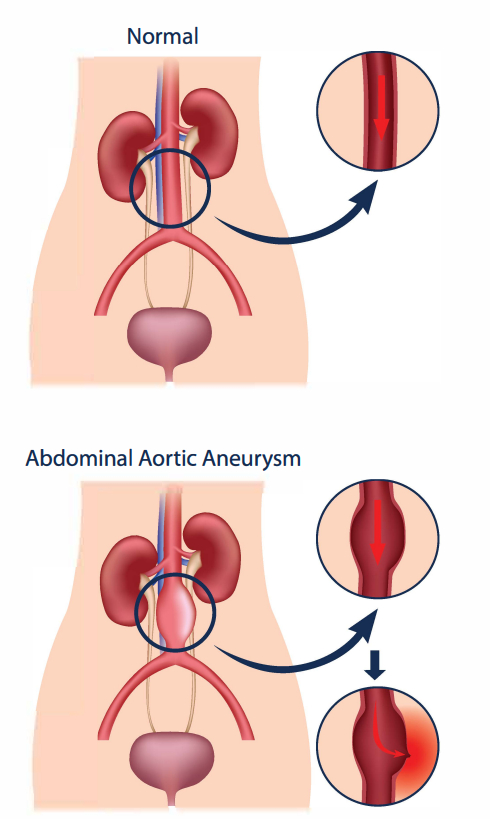
Risk Factors for Developing Aortic Aneurysm
There are several risk factors that can increase the likelihood of developing an Abdominal Aortic Aneurysm (AAA). Some of the most common risk factors include:
Understanding the risk factors associated with developing an aortic aneurysm is crucial for early detection and prevention. Several factors contribute to the development of this condition, including age, gender, smoking, high blood pressure, and family history.
Age is a significant risk factor for aortic aneurysms, with the incidence increasing as individuals get older. Men over the age of 65 are particularly at risk, although women can also develop this condition.
Smoking plays a detrimental role in the development of aortic aneurysms. The toxins present in cigarettes can damage blood vessels and promote the formation of fatty deposits known as plaques. These plaques can lead to atherosclerosis, a condition that weakens the walls of the arteries and increases the risk of aneurysm formation.
High blood pressure (hypertension) is another significant risk factor for developing an aortic aneurysm. Persistent high pressure within the arteries puts strain on their walls, potentially causing them to weaken and bulge over time.
Family history also plays a role in determining one’s susceptibility to developing an aortic aneurysm. If individuals have close relatives who have experienced this condition before, they may be at higher risk due to genetic predispositions or shared environmental factors.
It is important to note that while these factors increase the likelihood of developing an aortic aneurysm, they do not guarantee its occurrence. Regular check-ups with healthcare professionals and adopting healthy lifestyle choices such as quitting smoking and managing blood pressure can significantly reduce one’s risk of developing this potentially life-threatening condition.
Recognizing the Symptoms of Aortic Aneurysm
Recognizing the symptoms of aortic aneurysm is crucial for early detection and prompt medical intervention. While some individuals may not experience any symptoms, there are several key indicators that can help identify the presence of an aortic aneurysm.
One common symptom is a pulsating sensation in the abdomen. This occurs as the weakened area of the aorta expands and contracts with each heartbeat. It is important to note that this pulsation may be visible or palpable, depending on the size and location of the aneurysm.
Chest or back pain can also be indicative of an aortic aneurysm. The pain may be sharp, intense, or persistent, and it often radiates to other areas such as the shoulders or neck. If you experience sudden, severe chest or back pain, it is essential to seek immediate medical attention.
Shortness of breath can occur when an aortic aneurysm affects blood flow to vital organs such as the lungs. This symptom should not be ignored, especially if it accompanies other warning signs.
In some cases, individuals with an aortic aneurysm may experience pain in their legs, buttocks, or groin area. This discomfort arises due to reduced blood flow caused by pressure on nearby blood vessels.
Other potential symptoms of aortic aneurysm include nausea, low blood pressure, lightheadedness, and fainting spells. These occur when there is inadequate blood supply reaching various parts of the body due to compromised circulation caused by the expanding aneurysm.
If you notice any combination of these symptoms or suspect you may have an aortic aneurysm based on your medical history or risk factors such as smoking or high blood pressure, it is crucial to consult with your healthcare provider promptly. Early diagnosis and treatment significantly improve outcomes for individuals with this condition.
Diagnosis Methods for Aortic Aneurysm
Diagnosing aortic aneurysm involves a combination of physical examination and imaging tests. The initial step in the diagnosis process is usually a physical examination, where your doctor will listen to your heart and check for any abnormal pulsations or sounds in the abdomen.
Another imaging test that may be used is angiography. This procedure involves injecting contrast dye into the blood vessels and taking X-ray images. It provides detailed information about the blood flow through the arteries, helping doctors visualize any abnormalities or blockages. In some cases, surgery may be recommended to repair the aneurysm if it reaches a certain size or shows signs of rapid growth.
If Abdominal Aortic Aneurysm (AAA) is suspected, your doctor may conduct some tests to confirm the diagnosis. Some of the diagnostic tests that may be used to detect an AAA include:
- Ultrasound: This is a painless and noninvasive test that uses sound waves to create images of the aorta. It is the most common test used to diagnose AAA.
- CT scan: This is a more detailed imaging test that uses X-rays to create a 3D image of the aorta.
- MRI: This test uses a magnetic field and radio waves to create detailed images of the aorta.
- Angiography: This test involves injecting a contrast dye into the blood vessels to make them visible on X-rays.
Once the diagnosis of AAA is confirmed, your doctor may recommend monitoring the aneurysm regularly to check for any changes in size or shape. In some cases, surgery may be recommended to repair the aneurysm if it is large or growing rapidly.
The Importance of Regular Screening for Early Detection and Prevention of Complications
The significance of screening programs cannot be overstated. By identifying potential issues at an early stage, our highly qualified medical staff can intervene promptly, potentially preventing the development of serious complications. In the case of aortic aneurysms, early detection allows for timely medical intervention, reducing the risk of rupture and associated life-threatening consequences.
Early detection through regular screenings also provides the opportunity for timely medical interventions. Depending on the size and location of the aneurysm, treatment options may include lifestyle modifications, medication management, or surgical repair. By addressing these issues promptly, potential complications such as rupture can be minimized or even prevented altogether.
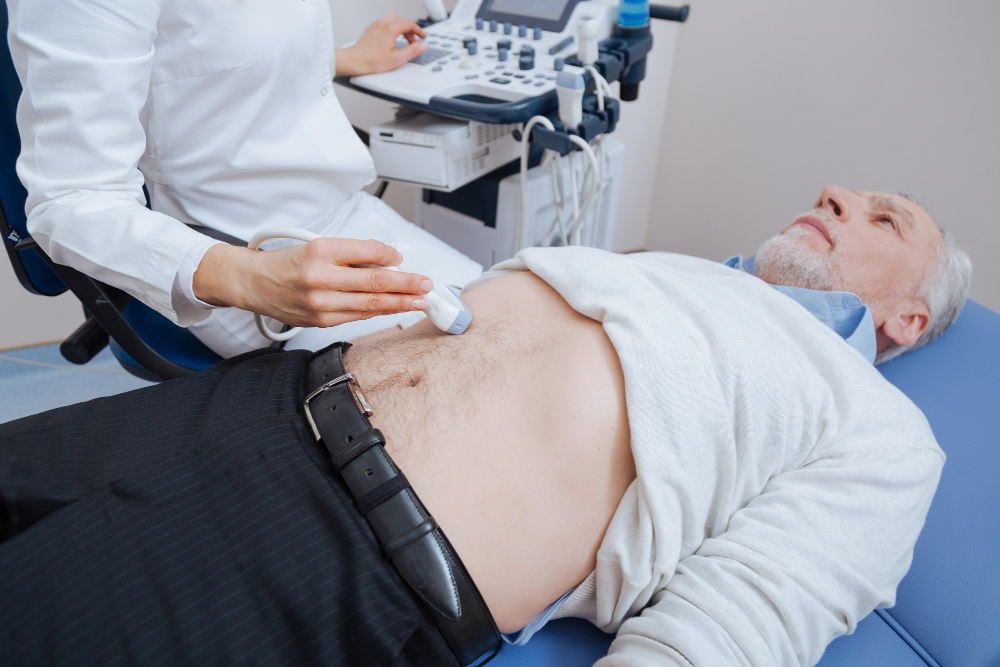
Treatment options for Abdominal Aortic Aneurysm
As for the treatment options for AAA, they may vary depending on the size and location of the aneurysm, as well as the overall health of the patient. Some of the possible treatments for AAA include:
- Watchful waiting: If the aneurysm is small, we may recommend regular monitoring to check for any changes in size or shape.
- Medications: If you have high blood pressure or high cholesterol, we may prescribe medications to help manage these conditions and reduce the risk of the aneurysm growing or rupturing.
- Endovascular repair: This is a minimally invasive procedure that involves inserting a thin tube (catheter) into the blood vessels and using a stent graft to reinforce the weakened area of the aorta.
- Open surgical repair: This procedure that involves removing the damaged section of the aorta and replacing it with a synthetic replacement. This can be done via a small incision in the groin or neck, or through an opening in the chest cavity.
- Transcatheter angioplasty: With this technique, our medical doctors insert what looks like an umbrella into blood vessels to open them up and repair them without surgery.
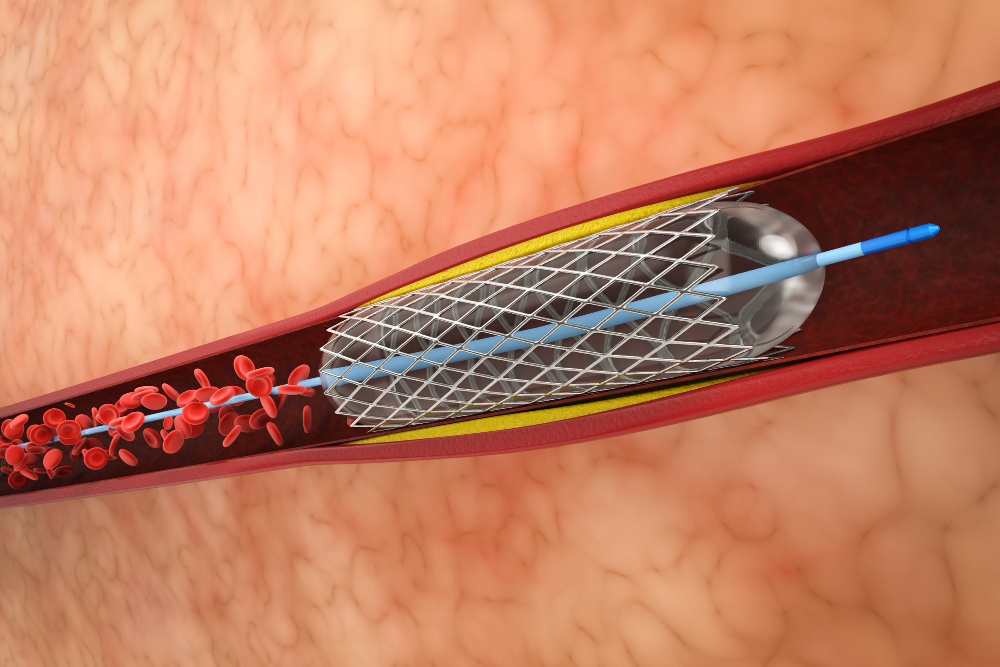
Lifestyle Changes and Self-care Measures to Support Treatment and Overall Well-being
Making lifestyle changes and practicing self-care measures are crucial for supporting treatment and promoting overall well-being. By adopting a healthy diet and exercise routine, individuals can significantly improve their physical health. A balanced diet rich in fruits, vegetables, whole grains, and lean proteins can help manage blood pressure levels and reduce the risk of chronic diseases.
Regular physical activity is equally important in maintaining a healthy lifestyle. Engaging in exercises such as walking, jogging, swimming, or cycling can strengthen the cardiovascular system, lower blood pressure, and improve overall fitness. It is recommended to aim for at least 150 minutes of moderate-intensity aerobic activity per week.
Another vital aspect of self-care is quitting smoking. Smoking not only damages the lungs but also increases the risk of heart disease and stroke. By quitting smoking, individuals can significantly improve their lung function and reduce the risk of developing various health conditions.
Recommended Videos
Our Top Abdominal Aortic Aneurysm Treatment Doctors
Dr. Phillip Zeni and Dr. Jacqueline Majors are two of the leading aortic aneurysm treatment doctors in Memphis, TN. They specialize in treating abdominal aortic aneurysms, which are bulges or weak spots in the wall of the aorta that can cause life-threatening complications if left untreated. Both doctors have extensive experience in diagnosing and treating these conditions, and they use the latest technology to ensure their patients receive the best possible care. With their expertise and dedication to patient care, Drs. Zeni and Majors are committed to providing quality treatment for those suffering from abdominal aortic aneurysms in Memphis, TN.

Jacqueline Ann Majors, M.D.
Abdominal Aortic Aneurysm Specialist and Limb Salvage Program Director
Majors is a vascular surgeon in Memphis, Tennessee and is affiliated with Methodist Hospitals of Memphis. She received her medical degree from University of Tennessee Health Science Center College of Medicine and has been in practice between 11-20 years. American Board of Surgery certified Vascular Surgeon with over fifteen years of experience serving patients in the greater Memphis metropolitan area. Dr. Majors has a passion for excellent patient care.
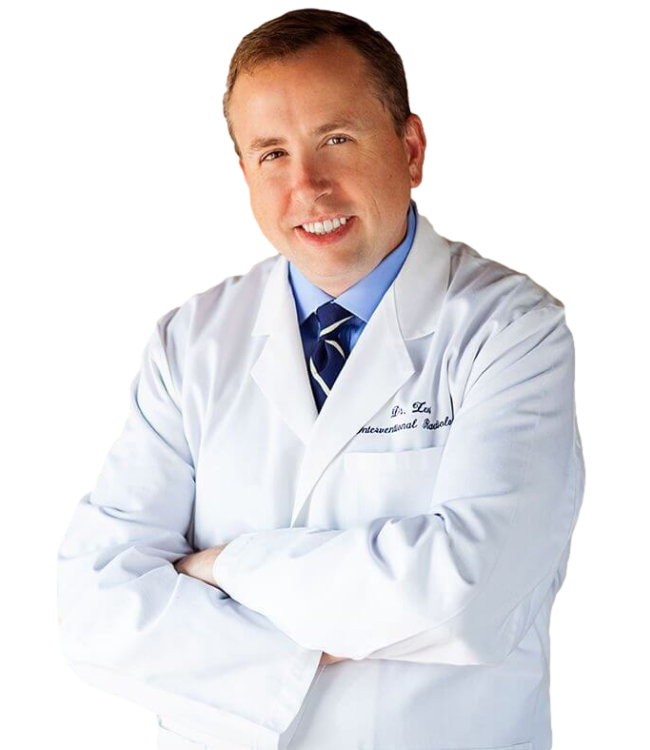
Phillip T. Zeni, Jr., M.D., FSIR
Dr. Phillip Zeni is a double board-certified Interventional Radiologist with over twenty years of experience serving patients in the greater Memphis metropolitan area. As the founder and medical director of Zenith Vascular, he specializes in the treatment of uterine fibroids, having successfully performed more than 3000 embolization procedures over the past twenty years!
